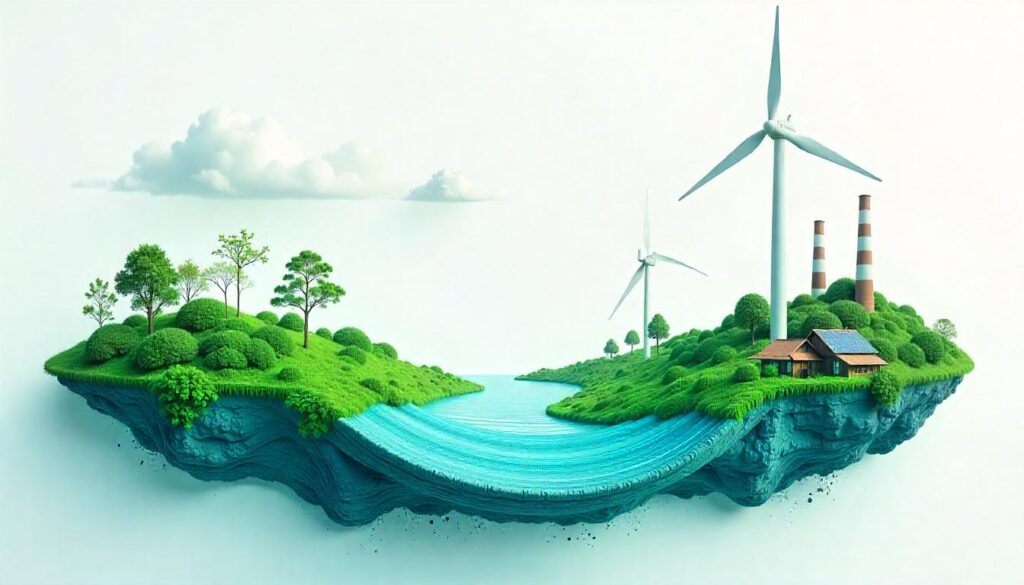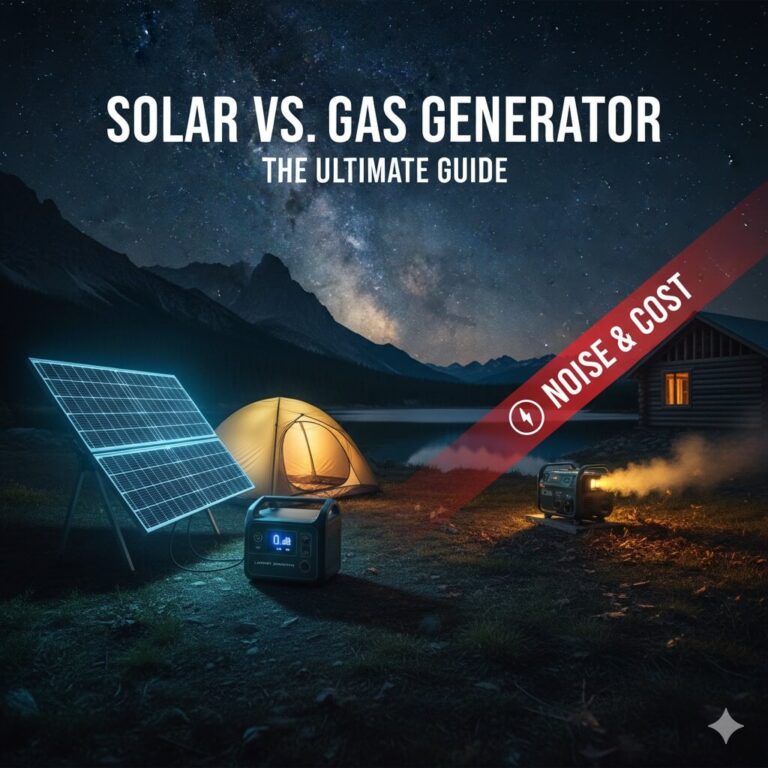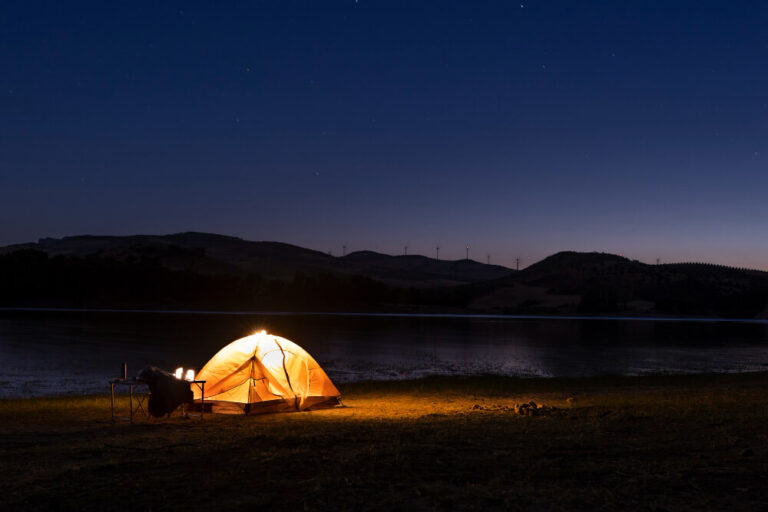Beyond Solar: Mapping Cambodia’s Hidden Wind Power Potential for Strategic Investors

Cambodia stands as a shining example of rapid green energy adoption in Southeast Asia. The kingdom’s impressive strides in utility-scale solar power generation underscore its unwavering commitment to a sustainable energy future. Yet, as the nation continues its ambitious green transition, a powerful, often overlooked, resource remains largely untapped: wind. While solar has rightly commanded attention, harnessing Cambodia’s hidden wind power potential represents the next pivotal frontier for energy diversification and long-term resilience. For discerning international investors and developers, pinpointing the prime locations for wind farms is not just about identifying a resource; it’s about seizing a compelling opportunity in a nascent, high-growth market.
- Cambodia’s Energy Mix: A Need for Diversification
- Unveiling the Wind: Assessing Cambodia’s Renewable Resource
- Prime Locations: Where the Wind Blows Strongest in Cambodia
- Why Act Now: Strategic Advantages for Early Movers
- Conclusion: Catching the Wind for a Greener Future
- Frequently Asked Questions (FAQs) about Cambodia’s Wind Energy Potential
Cambodia’s Energy Mix: A Need for Diversification
Cambodia’s energy landscape has transformed dramatically over the past decade. The nation has successfully expanded access to electricity for a vast majority of its population, primarily relying on a mix of hydropower, rapidly growing solar capacity, and a significant portion of imported fossil fuels. While hydropower provides a substantial clean energy base, its output can fluctuate significantly with seasonal rainfall, creating vulnerabilities in energy supply, particularly during dry seasons. The strategic imperative for Cambodia’s energy security therefore hinges on diversifying this mix, reducing reliance on external sources, and enhancing grid stability.
This push for diversification isn’t merely about adding new megawatts; it’s about building a robust, resilient energy infrastructure that can withstand global market volatility and climatic shifts. Wind power, with its different generation profile compared to solar and hydro, can play a highly complementary role, providing a more consistent supply during non-sunlight hours or periods of low water levels. This strategic integration is vital for building a truly secure and sustainable energy future for Cambodia.

Unveiling the Wind: Assessing Cambodia’s Renewable Resource
While solar has been the dominant narrative, scientific assessments consistently highlight Cambodia’s significant, yet underexploited, wind resource. Global studies, such as those conducted by the National Renewable Energy Laboratory (NREL), paint a compelling picture. NREL’s comprehensive wind resource assessments, for instance, indicate that Cambodia possesses a substantial technical wind power potential, estimated to be in the multi-gigawatt range at typical turbine hub heights (e.g., 100-120 meters). This potential is comparable to, and in some areas even exceeds, that of some neighboring countries with more established wind sectors.
The methodology for assessing this potential involves sophisticated wind resource mapping, which combines meteorological data (wind speed and direction measurements), advanced modeling techniques, and topographic analysis. This allows experts to identify areas with consistent, strong wind flows, making them viable for utility-scale wind farm development. Such detailed assessments provide the bedrock for informed investment decisions, minimizing risks and maximizing returns.

Prime Locations: Where the Wind Blows Strongest in Cambodia
Understanding the overall potential is one thing; identifying specific, commercially viable locations is another. Based on comprehensive wind resource assessments and early-stage feasibility studies, several regions in Cambodia consistently emerge as prime candidates for wind farm locations in Cambodia:
- Coastal Regions (Kampot and Preah Sihanouk Provinces): These provinces benefit from their proximity to the sea, which often results in more consistent and higher average wind speeds due to thermal differences between land and sea. Studies have indicated promising average annual wind speeds, particularly suitable for onshore wind farms located within reasonable proximity to existing grid infrastructure. For instance, reputable developers like The Blue Circle have reportedly conducted detailed wind resource studies in these areas, signaling their commercial viability.
- Highland and Plateau Areas (Mondulkiri Province & Bokor Mountain): Elevated terrains offer unique advantages, as wind speeds typically increase with altitude and are less obstructed by ground-level features.
- Mondulkiri Province, located in eastern Cambodia, is frequently cited for its significant wind potential, particularly suitable for large-scale onshore wind farms. This region’s open landscapes and consistent winds make it ideal for utility-scale projects. Notably, companies like Leader Energy have already announced intentions to develop substantial wind power projects here, with a proposed 150 MW wind farm underscoring the region’s strong prospects.
- Bokor Mountain, within Kampot Province, also presents considerable potential due to its elevation and exposure to consistent air currents, making it another prime candidate for wind development.
- Potential for Offshore Wind: While still in its very nascent stages and requiring more in-depth environmental and technical studies, the long-term potential for offshore wind in Cambodia in its territorial waters exists. This would represent a higher capital investment but also offer larger scale and potentially more consistent wind resources.
Wind resource maps provide a clear visual confirmation of these high-potential zones, demonstrating that while the total land area for prime wind development might be concentrated, the resource quality in these specific regions is significant.

Why Act Now: Strategic Advantages for Early Movers
For international investors and developers, Cambodia’s wind power sector presents a compelling array of strategic advantages that make it ripe for immediate exploration:
- Untapped Market & First-Mover Advantage: Compared to its neighbors, Cambodia’s wind sector is still largely undeveloped. This offers a unique first-mover advantage in renewable energy to secure prime sites, establish market presence, and influence the nascent industry’s trajectory.
- Strong Government Support: The Cambodian government is actively pushing for energy diversification and welcomes Foreign Direct Investment (FDI) in its energy sector. Their commitment to sustainable development provides a stable and potentially lucrative investment environment.
- Complementary Resource Synergy: Investing in wind power in Cambodia isn’t just about adding capacity; it’s about creating a more resilient energy mix. Wind complements solar (generates power at night or on cloudy days) and hydro (generates power when water levels are low), offering a more balanced and reliable grid.
- Economic & ESG Benefits: Beyond attractive financial returns in a rapidly growing economy, investing in Cambodian wind power aligns perfectly with global Environmental, Social, and Governance (ESG) mandates. It contributes directly to carbon reduction targets, strengthens energy security, and fosters local economic development.
Conclusion: Catching the Wind for a Greener Future
Cambodia’s journey towards a greener, more resilient energy future extends far beyond its impressive solar achievements. The nation possesses substantial, yet largely untapped, Cambodian wind energy potential in strategically located coastal and highland regions. For international investors and developers, this presents a rare and compelling opportunity to be an early mover in a market poised for significant growth and diversification.
By engaging with Cambodian authorities and local partners, investors can play a pivotal role in harnessing this clean, powerful resource. This is an invitation not just to build wind farms but to actively shape Cambodia’s energy independence, contribute to its sustainable development goals, and secure attractive long-term returns in a dynamic and welcoming investment climate. The wind is calling—it’s time to help Cambodia catch it.
Frequently Asked Questions (FAQs) about Cambodia’s Wind Energy Potential
- Q: Does Cambodia truly have sufficient wind resources for large-scale power generation?
- A: Yes. Studies by reputable organizations like NREL indicate significant technical wind power potential in Cambodia, with specific regions consistently showing average annual wind speeds viable for utility-scale development (e.g., 6-7+ m/s at standard hub heights).
- Q: Where are the most promising locations for wind farm development in Cambodia?
- A: Prime locations include coastal areas like Kampot and Preah Sihanouk provinces and highland/plateau regions such as Mondulkiri province and around Bokor Mountain due to their consistent and strong wind regimes.
- Q: Has any actual wind power project been announced or developed in Cambodia yet?
- A: While the sector is nascent, there have been significant feasibility studies conducted by international developers, and companies like Leader Energy have publicly announced intentions or plans for large-scale wind farm projects in regions like Mondulkiri.
- Q: How would wind power complement Cambodia’s existing energy mix, especially solar and hydropower?
- A: Wind power provides a crucial diversification asset. It can generate electricity during non-sunlight hours (when solar isn’t producing) and during dry seasons (when hydropower output might be low), enhancing overall grid stability and reducing reliance on imports.
- Q: What are the key advantages for early investors in Cambodia’s wind energy sector?
- A: Key advantages include securing prime, undeveloped sites, benefiting from a supportive government keen on diversification, gaining a first-mover advantage in an emerging market, and aligning with global ESG investment objectives.



